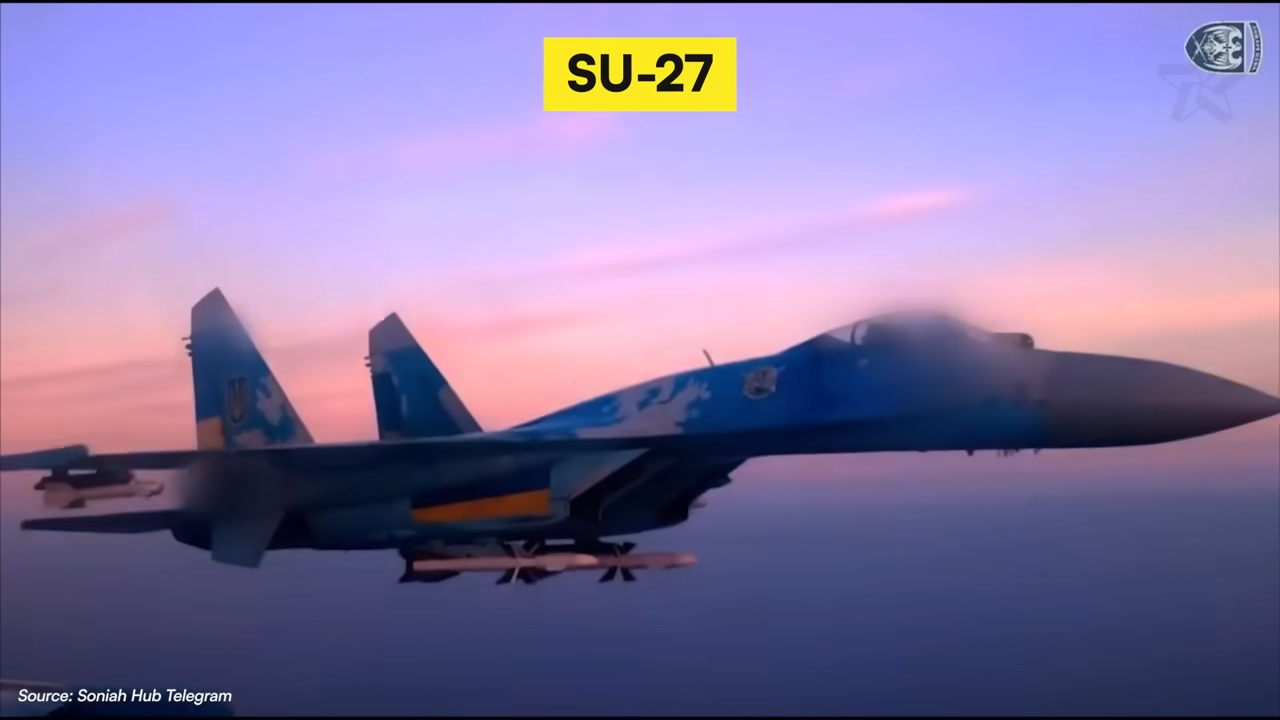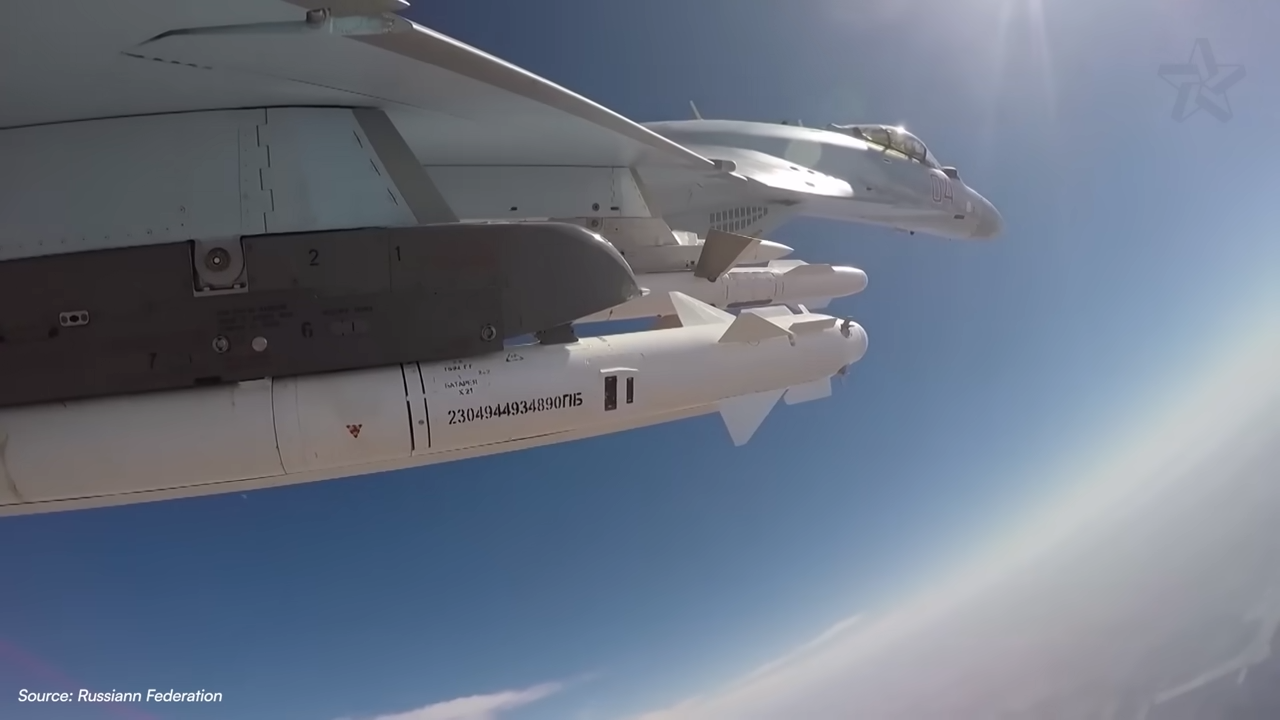In a harrowing display of aerial warfare, a Ukrainian SU27 fighter jet executed a dangerously complex bombing mission today, narrowly evading a barrage of Russian S400 and S300 missile strikes while delivering a devastating payload to a Russian command post in occupied Harkiv Oblast. The high-stakes encounter unfolded at precisely 1000 hours local time and serves as a stark reminder of the ferocious intensity characterizing the ongoing conflict in Ukraine.
 As the mission commenced, the Russian command post—operating under the guise of Fortress Security—was obliviously scanning their Telegram feed, wholly unaware that a Ukrainian jet was zooming in at breakneck speed. The pilot of the SU27, armed with precise intelligence about enemy positions, initiated an aggressive approach, only to receive dire warnings that an unidentified Russian air defense system was locking onto the aircraft from 300 kilometers away. The alarm bells blared as the SU27’s radar warned of imminent danger, pushing the pilot into action as twin AL31F engines roared to life, surging forward with desperate urgency.
As the mission commenced, the Russian command post—operating under the guise of Fortress Security—was obliviously scanning their Telegram feed, wholly unaware that a Ukrainian jet was zooming in at breakneck speed. The pilot of the SU27, armed with precise intelligence about enemy positions, initiated an aggressive approach, only to receive dire warnings that an unidentified Russian air defense system was locking onto the aircraft from 300 kilometers away. The alarm bells blared as the SU27’s radar warned of imminent danger, pushing the pilot into action as twin AL31F engines roared to life, surging forward with desperate urgency.
In a display of aerodynamic brilliance, the Ukrainian pilot banked hard left, but the threat did not relent. An S400 missile erupted from its launcher—a terrifying 40 N6E designed to track its target with ruthless accuracy using advanced predictive mathematics. As operators in the Russian command center closely monitored track number 247, the missile streaked through the sky, homing in on the SU27 by calculating its most probable movement within an alarmingly short time frame. The stakes were unfathomably high, and time was a merciless adversary.

Navigating at low altitude across Ukrainian farmland—from high ground into the valleys below—the pilot bravely threaded the needle, using the very curvature of the Earth itself as a shield against the radar scanning capabilities of the enemy defense system. He hoped the terrain could mask him from the deadly missile now in pursuit. However, unbeknownst to him, the S400 system was executing a meticulous plan, intelligently calculating the trajectory and intercept point as it tracked his evasive maneuvers.
At this critical juncture, it became clear that the Russian air defense systems had evolved into a deadly game of calculated probabilities—each missile, not merely aimed at its target, but positioned at predicted intercept points. The military’s strategic doctrine relied on familiarity with Ukrainian flight patterns, betting that a pilot would ultimately conform to recognized operational behavior. Each maneuver by the Ukrainian pilot was met with fierce anticipation by the Russian defenses, testing the limits of experience and adrenaline.
Just as it appeared the Ukrainian aviator might slip through the grasp of death, an S300 battery activated, unleashing a volley of missiles—each programmed to exploit predictable movement with lethal intent. The Ukrainian pilot was suddenly thrust into a perilous predicament, trapped in the lethal crosshairs of an engineered ambush. Human error was not an option as he deployed countermeasures, releasing chaff to confuse the targeting systems that sought his aircraft. But resilience and skill were key—would he manage to evade these latest threats?
As missiles tracked closely, the pilot executed a daring maneuver—zooming straight upward, trading speed for altitude, forcing the enemy missiles to play catch-up and momentarily lose their target lock. But even as he successfully evaded their immediate attacks, the pilot realized the cost of his victory: a dangerously low fuel gauge. Unyielding pressures mounted; with each second that ticked away, he was more acutely aware that success in warfare carries its burdens.
Yet fate was not done with him. With S300 batteries tracking his every ascent, two new enemy SU35s swiftly vectoring in on his position, inching closer with each passing moment. The SU35s, heralded for their unmatched technological superiority, locked onto his compromised vessel, preparing to unleash yet another volley of death. The Ukrainian pilot was engaged in the deadliest chess match of his life—a veritable video game where his survival hung in the balance, with no option for respawn.
The SU35 launched an R37M hypersonic missile, a monster designed for annihilation, propelling through the atmosphere like a comet of destruction. The odds were arduous: the SU27 had to reach a specified 27,000 feet altitude to effectively release its own payload, while time was running thin—an omnipresent threat hovering relentlessly behind him. With quick calculations, the pilot made the fateful decision to drop a JDAM ER, a precision-guided munition, just as the missile threatened catastrophic impact—balancing on the razor’s edge between life and death.

The odds seemed insurmountable; however, luck was on the side of the brave. As the JDAM detachment activated its wings, the pilot held steady despite the overwhelming urge to maneuver away from sure destruction. With the chaos unfolding above, this electronic marvel descended upon the unsuspecting Russian command post, once believed to be impervious to siege. After a fervent descent, it exploited every facet of military technology, combat strategy, and pure geography, striking true to its target with explosive precision.
In an instant, the Russian command structure was devastated, with shockwaves of destruction coursing through the building. Eyewitness accounts later reported a series of thunderous explosions, as the structure crumbled under the force of the JDAM’s detonation, leaving only chaos and uncertainty in its wake. The sky bore witness to the chilling fallout, while Ukrainian forces celebrated the capture of valuable intelligence that will undoubtedly shape the ongoing conflict.
The aerial ballet that unfolded today—marked by precision tactics and split-second decisions—serves as an undeniable testament to the intense and perilous nature of this geostrategic struggle. While one pilot emerged victorious, the broader war continues to claim lives, forge alliances, and rewrite the rules of engagement on the global stage. Each encounter encapsulates the profound risks and sacrifices made in pursuit of sovereignty and resistance amid the maelstrom of war.
As the sun sank below the horizon, scattered reports emerged of reconstructed strategies among both Ukrainian and Russian forces. Operational architects on both sides are analyzing the day’s outcomes as the world watches with bated breath—hoping that no further confrontations will unfold, but bracing for reality where the narrative of conflict seems unrelenting, ever-evolving, and tragically vivid. The aerial confrontation over Harkiv Oblast was not merely one act in a larger theater but an emblem of defiance in the face of overwhelming odds—a blazing reminder of the stakes involved in a world where freedom hangs delicately in the balance.





